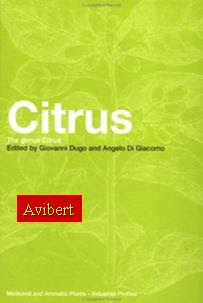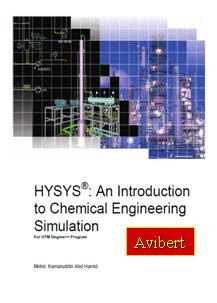Engineering: design and layout of the plant and equipment and its built-in controls impact the entire process. The capacity of the heating or cooling system is important in this context. Process engineering is used to understand the control of the chemical processes on a plant scale. It determines which equipment should be used and how the chemical processes should be performed. In addition, take into account technical failure of equipment, human errors (deviations from operating instructions), unclear operating instructions, interruption of energy supply, and external influences, such as frost or rain (for more, see Design Options).
Chemistry: the nature of the process and the behavior of products must be known, not only under reaction conditions, but also in case of unexpected deviations (for example, side reactions, instability of intermediates). Chemistry is used to gain information regarding the reaction pathways that the materials in question follow.
Physical chemistry and reaction kinetics: the thermophysical properties of the reaction masses and the kinetics of the chemical reaction are of primary importance.
Physical chemistry is used to describe the reaction pathways quantitatively.
Data collectionThe following data are especially relevant in avoiding runaway reactions:
• Physical and chemical properties, ignition and burning behavior, electrostatic properties, explosion behavior and properties, and drying, milling, and toxicological properties
• Interactions among the chemicals
• Interactions between the chemicals and the materials of construction
• Thermal data for reactions and decomposition reactions
• Cooling-failure scenarios
Design Options(2)If a reaction is has the potential for runaway, the following design changes should be considered:
• Batch to continuous. Batch reactors require a larger inventory of reactants than continuous reactors do, so the potential for runaway in continuous systems is less by comparison
• Batch to semi-batch. In a semi-batch reaction, one or more of the reactants is added over a period of time. Therefore, in the event of a temperature or pressure excursion, the feed can be switched off, thereby minimizing the chemical energy stored up for a subsequent exothermic release
• Continuous, well-mixed reactors to plug flow designs. Plug-flow reactors require comparatively smaller volumes and therefore smaller (less dangerous) inventories for the same conversion
• Reduction of reaction inventory via increased temperature or pressure, changing catalyst or better mixing. A very small reactor operating at a high temperature and pressure may be inherently safer than one operating as less extreme conditions because it contains a much lower inventory
(3). Note that while extreme conditions often result in improved reaction rates, they also present their own safety challenges. Meanwhile, a compromise solution employing moderate pressure and temperature and medium inventory may combine the worst features of the extremes
(3).
• Less-hazardous solvent• Externally heated or cooled to internally heated or cooledThermal Stability Criteria (1, 4)
As a guideline, three levels are sufficient to characterize the severity and probability of a runaway reaction, as shown in the Table.
Adiabatic temperature riseThe adiabatic temperature rise is calculated by dividing the energy of reaction by the specific heat capacity as shown in Equation(a).
ΔTad = 1,000Qr/Cp ............(a)
where:
ΔTad = adiabatic temperature rise, K
Qr = energy of reaction, kJ/kg
Cp = heat capacity, J/(kg)(K)
Time to maximum rate (TMR)TMRad (the time to maximum rate, adiabatic) is a semiquantitative indicator of the probability
of a runaway reaction. Equation (b), defining TMRad in hours, is derived for zero-order
reaction kinetics:
TMRad = CpRTo2/3,600qoEa .............(b)
where:
R = gas constant, 8.314 J/molK
To = absolute initial temperature, K
qo = specific heat output at To, W/kg
Ea = activation energy, J/mol
The TMR value provides operating personnel with a measure of response time. Knowledge of the TMR allows decisions to be based on an understanding of the time-frame available for corrective measures in case heat transfer is lost during processing.
References(1). Venugopal, Bob, Avoiding Runaway Reactions, Chem. Eng., June 2002, pp. 54–58.
(2). Smith, Robin, ”Chemical Process Design”, McGraw-Hill, New York, 1995.
(3). Kletz, T. A., “Cheaper, Safer Plants” IChemE Hazard Workshop, 2d., IChemE, Rugby, U.K., 1984.
(4). Gygax, R., Reaction Engineering Safety, Chem. Eng. Sci., 43, 8, pp. 1759–71, August 1998.




















































 As a guideline, three levels are sufficient to characterize the severity and probability of a runaway reaction, as shown in the Table.
As a guideline, three levels are sufficient to characterize the severity and probability of a runaway reaction, as shown in the Table.










 La Geosmina es producida principalmente por algas verde-azules y actinomicetos, y el MIB es producido por ciertas especies de cianobacterias, principalmente la Oscillatoria.
La Geosmina es producida principalmente por algas verde-azules y actinomicetos, y el MIB es producido por ciertas especies de cianobacterias, principalmente la Oscillatoria. En esta nota, proponemos un método basado en Ionización Química (CI) utilizando metanol como agente ionizante, combinando el potencial de la técnica de cromatografía gaseosa y detección MS/MS por trampa de iones utilizando un sistema Varian 240MS y la extracción por SPME automatizada por medio de un autosampler Varian PAL con una fibra de 2 cm de 50/30 micras DVB / Carboxen / PDMS para alcanzar la cuantificación de estos compuestos a niveles de 1ppt (partes por trillón) de manera confiable y reproducible.
En esta nota, proponemos un método basado en Ionización Química (CI) utilizando metanol como agente ionizante, combinando el potencial de la técnica de cromatografía gaseosa y detección MS/MS por trampa de iones utilizando un sistema Varian 240MS y la extracción por SPME automatizada por medio de un autosampler Varian PAL con una fibra de 2 cm de 50/30 micras DVB / Carboxen / PDMS para alcanzar la cuantificación de estos compuestos a niveles de 1ppt (partes por trillón) de manera confiable y reproducible.


 La flexibilidad del sistema Varian 240-MS Ion Trap permite la eliminación de la interferencia de la matriz aplicando el modo MS/MS y la utilización de agentes ionizantes químicos líquidos como en este caso metanol, sin necesidad de almacenamiento de tubos, garrafas o reguladores de presión necesarios en otros sistemas que requieren gases como agente ionizante.
La flexibilidad del sistema Varian 240-MS Ion Trap permite la eliminación de la interferencia de la matriz aplicando el modo MS/MS y la utilización de agentes ionizantes químicos líquidos como en este caso metanol, sin necesidad de almacenamiento de tubos, garrafas o reguladores de presión necesarios en otros sistemas que requieren gases como agente ionizante. Para Mayor Información:
Para Mayor Información:





















